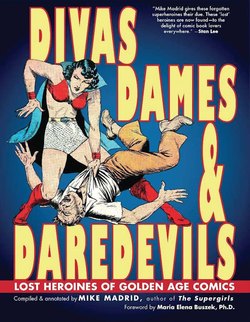Читать книгу Divas, Dames & Daredevils - Mike Madrid - Страница 7
На сайте Литреса книга снята с продажи.
ОглавлениеGOLDEN YEARS
Everyone thinks of the 1970s as being a decade of bell-bottoms, mood rings and disco balls. There were certainly plenty of those. But growing up during that time, I also recall the ’70s as being an era of great nostalgia. “Old is in, and we are happily awash in the sleek and gaudy period that stretched from the ’20s through the ’30s and into the ’40s,” wrote Life Magazine, in a 1971 cover story on the nostalgia craze. The poster shop at the local shopping mall started selling reproductions of old Hollywood movie posters. New films of that time like “Cabaret,” “Paper Moon,” and “The Great Gatsby” were bringing the ’20s and ’30s back to life. I didn’t know anything about fashion, but I knew my older sister and her friends were painting their nails red and wearing ’40s style dresses. So I was aware of all this, but it was too young to affect me. Or so I thought.
By the early ’70s, I had been reading comic books for a few years. At that time it was a very casual hobby. I mainly bought a comic book if its cover looked good, or if there was an interesting female character inside. I was vaguely aware of how long some of the famous superheroes had been around, but I didn’t necessarily give it much thought. I remember seeing a comic book that reprinted a Batman story from the 1940s. That was my first introduction to the concept that comic books actually had a history.
My favorite place to kill time at the shopping mall was the B. Dalton Bookseller. My life changed the day I found the section called “humor.” In among the collections of New Yorker cartoons and Peanuts comic strips were histories of comic books. I felt like I had stumbled into Aladdin’s cave. Here were stories about Superman and Batman from the 1940s. They looked and acted differently than the way they were being presented in contemporary comics. And there were all of these other fascinating characters that I’d never heard of, like Plastic Man, The Spirit, and Sheena. Week after week I’d go back to that bookstore and pore over The Great Comic Book Heroes by Jules Feiffer and The Steranko History of Comics to see what new bit of information I could glean. Especially intriguing was the collection of 1940s Wonder Woman stories that Ms. Magazine produced. All of these stories seemed wilder than what I was reading in comics at the time. The characters brimmed with fire and vibrancy. Soon I was haunting my local library and repeatedly checking out books like Comix by Les Daniels, and All In Color For A Dime by Dick Lupoff, to learn as much as I could about comic book history. The ’70s nostalgia bug had bit me. I had discovered the Golden Age of Comics, and had started down the road to comic book geekdom.
Over the years I became a more serious comic collector. I started going to comic book conventions. I read every book I could find on comics. Eventually I even wrote a book of my own called “The Supergirls,” which was a history of comic book superheroines. After “Supergirls” was published, I began hearing from readers. Many had no idea that the history of comic books stretched back to the late 1930s. They told me that reading “Supergirls” made them want to learn more about the early comics, and specifically about the female characters that appeared in them. It was great to hear this. I felt that in some small way I might have done for these readers what those authors in the ’70s had done for me.
Recently I found myself going back to revisit comic books of the ’30s and ’40s. I knew quite a bit about the more famous comic book heroines of that era, characters like Phantom Lady, The Black Cat, and Miss Fury. But I wound up encountering dozens of characters I knew little about, or even had never heard of. As I read the amazing adventures of obscure heroines like Madame Strange, Calamity Jane, and The Magician From Mars, I felt like that ten-year old kid who was discovering old comics for the first time.
While there are a number of heroines I would like to have included in a collection like this, I focused on the ones that I have dubbed as ‘lost’. These are characters you may have heard of, but whose stories you never had the chance to read. Or they may be women who only made a few appearances and then disappeared. They may have been lost, but you will find they are definitely unforgettable. I invite you to meet a group of daring heroines from the early days of comic books who will surprise and entertain you, I hope as much as they have me.
